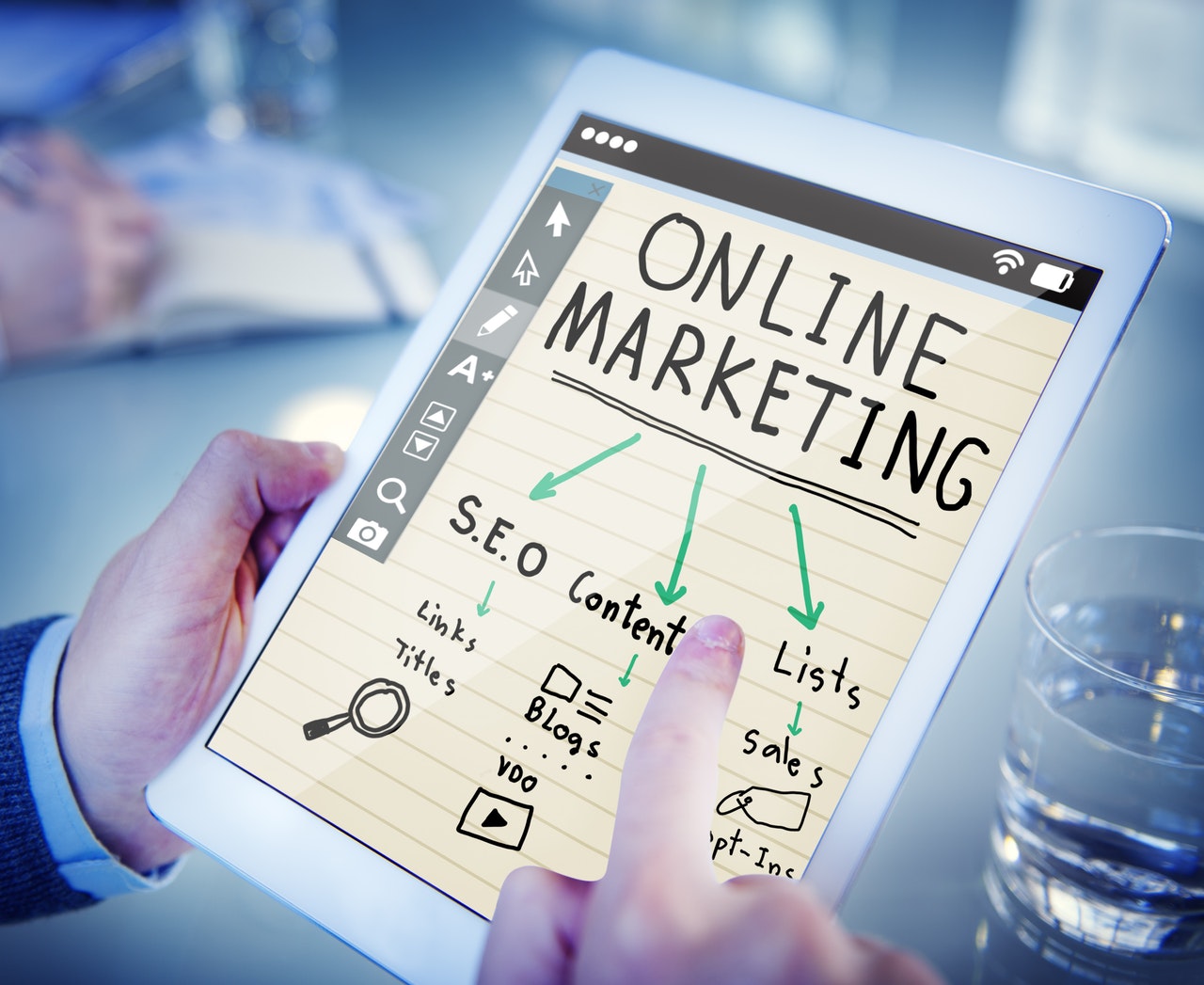Even the greatest product or service will be unsuccessful if it never reaches the people that need it. Out of all the products and services flooding the Internet today, how do you make yours stand out from the pack, reach your customers where they are online, and cater to them in a way that will actually make a lasting impact?
We believe that the most successful marketing campaigns begin with getting to know your customer.
Who Is Your Audience?

The first step in any marketing strategy is to define your target customer profile or your ‘buyer persona’. Before creating a complete customer profile, begin by categorizing yourself as a B2B or B2C company.
- B2B: Business-to-Business companies sell services or products directly to other businesses for use or resale. If you are B2B Company, your advertising efforts should be directed toward attracting the attention of decision makers like CEOs, VPs, or Directors.
- B2C: Business-to-Consumer companies sell services or products directly to customers, either online and/or at a physical storefront. If you are a B2C Company, your advertising efforts should be catered to your specific customer demographic.
Once you have determined who your customer is, it’s time to create a complete customer profile by answering the following questions:
- What is their age/identity/style? (Example: 20-30-year-old college student with athletic style, or 50+ year-old professional in technology)
- What is their income/budget? (Bargain shopper, or corporate budget)
- Where do they shop? What do they buy? (Home depot – home security items, Target – home décor, or Urban Outfitters – vintage-style apparel)
- What are some words that describe them? (Elegant, artistic, playful, outdoorsy, classic)
- What imagery do they relate to? (Dark and moody, family and community, high-end professional)
- What search engines/websites do they visit? (Bing, Google, Forbes, Teen Vogue)
- What social media platforms do they use? (Facebook, Instagram, Snapchat, LinkedIn, YouTube)
This list is, by no means, a complete character profile questionnaire, but it is a great place to start in getting to know your target customer.
Where Is Your Audience?
Now that you know whom you’re speaking to, the next step is finding out where they spend most of their time online.
B2B Companies
While decision makers and business professionals often have various social media accounts, they tend to use LinkedIn primarily for business-related activities. LinkedIn is an ideal place to search for decision makers and to reach out to them on a professional platform. B2B companies can also turn to tools like Google Ads (previously Google AdWords), YouTube, and Facebook Ads to create brand recognition and place ads in front of decision makers.
B2C Companies
In B2C marketing, it is especially important to create a full character profile for your target audience because your audience location depends entirely on the product and the customer demographic. Typically, you are likely to reach your B2C customers on social media platforms like Facebook and Twitter, through targeted ad campaigns. For visual products, platforms such as Instagram, Pinterest, and YouTube are optimized for image marketing and are ideal for getting your product in front of your target audience.
Location Targeting
Digital Ads
A great way to reach your target audience is to utilize location-targeting features when designing your online ad campaigns. Google Ads and Facebook Ads allow you to choose locations where you want your ads to be shown.
For example, if you own a local cupcake bakery with a storefront in Seattle, you can use location targeting to show ads only to your target audience inside the city limits of Seattle.
Content
You can also use location-targeting strategies in content marketing by using your location as a keyword in your content.
For example, if you own the cupcake bakery mentioned above, you can create a baking blog that attracts local customers with topics like, “8 Must-Have Baking Ingredients From the Ballard Farmer’s Market”, and “New Cupcake Designs for Seattle Pride Parade”
Geofencing
Another great tool for reaching your target customers is to use Geofencing to bring location-specific information to consumers. With Geofencing, you can create invisible boundaries around specific locations or shops, and automate push notifications or ad campaigns to be triggered when a potential customer enters or exits that area. For more on Geofencing, read our previous blog, “Geofencing: What Is It, And How Is It Used?”
What Does Your Audience Want?

Now that you know who they are and where they are, it’s time to create marketing materials that will appeal to the needs and wants of your target audience, keep them engaged, and keep them coming back to your brand.
Brand connection – Use visual social media platforms like Pinterest and Instagram to advertise your brand and tell the story of your company. Both B2B and B2C Companies can benefit from showcasing peer reviews to help establish trust and promote brand recognition and loyalty.
The use of video is a highly effective (yet underused) marketing tool for B2B and B2C companies. Video can be a cost-effective way to raise brand awareness and tell a story to build lasting and memorable connections.
Visual representation – Especially for B2C companies, visual representation of the product or brand is an important component of winning your target audience over. Use your buyer persona exercise to design ads that appeal to your target audience, use clear and captivating photos, and creative designing to capture your audience’s attention.
If you are selling a product that relates to home improvement, use Pinterest and Instagram to demonstrate unique room designs that showcase your product.
- If you sell clothing, create mood boards and outfit guides.
- If you sell art, show what your art looks like hanging on a wall in a home.
Whatever your brand, if it’s visual, there’s a way to show it off on social media.
Education – B2B and B2C Companies can create quality content to support your brand and establish your company as a leader in your industry. While visuals catch the attention of your target audience, supporting content holds their attention and creates brand permanence and loyalty. A true leader in an industry keeps their audience in the know by providing current information that solves their needs.
- If you sell clothing or accessories, write a style blog.
- If you sell tools or home design elements, write a DIY home improvement blog.
- If you sell software, write an informational blog that answers common questions about your industry.
What Channels Can You Use?

In digital marketing, there are several ways to reach your audiences. We’ve mentioned a few of these in the sections above, but here is a brief outline to introduce you to some of the most popular forms of online advertising used today.
- PPC – Pay Per Click advertising is a way for advertisers to bid for ad placement, usually in search engine results or on social media platforms. PPC is a great way to stretch marketing dollars by paying a small amount only when the ad is clicked. For more on PPC advertising, read our previous PPC blogs.
- SEO –Search Engine Optimization is the practice of designing online content in a way that is recognized by search engines as high quality. By taking actions like tagging, inserting keywords, link building, and referencing quality websites, you can make your website appear on the right search queries to grow the quantity and quality of traffic to your site. For more on SEO, read our previous SEO blogs.
- Display – Display advertising is a form of PPC. These ads appear as banner ads and appear on webpages that are relevant to your product. This is a great way to show ads on websites that your target audience is likely to view. For more on Display, read our blog A Beginners Guide to Programmatic Advertising.
- Email – Email marketing includes onboarding emails and sales campaigns, any advertising message that’s sent directly to an email inbox. Email marketing is a cheap and effective way to follow up with past customers, win customers, build brand value, win repeat business, and generally be in touch with people that want to hear from you. For more on Email Marketing, read our previous post, Email Marketing: Why it Works, and How it Can Work For You.
- Social Advertising – Social advertising includes ads placed on Facebook, Instagram, Pinterest, or any other social media platform. It’s one of the most cost-effective forms of advertising and, with detailed demographic information and advanced ad technology on many social channels; it’s proven to be highly effective. For more on Social Advertising, read our blog Facebook Advertising for Beginners, Part 1: Research and Setup.
- Video – Video advertising refers to any advertising message that is sent by video. The most popular channels for video advertising are Facebook, Instagram, and YouTube. Video is a great way to introduce your brand, bring value to your current clients, introduce a new product, or simply tell your story to establish brand identity. Video can be a cost-effective and highly memorable way to engage your target audience. For more on Video, read our blog How Video Marketing is Changing B2B and B2C Marketing.
As a marketer, you want your marketing dollars to matter. By deeply investigating your target audience, developing a buyer persona, and designing ads and informational content that deepen brand loyalty, you can be where your customers are online, and earn and keep customers for life.
For help finding and reaching your ideal customer, contact us at Fujisan Marketing. We are eager to help you create and implement a highly effective digital marketing strategy.





